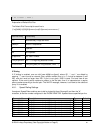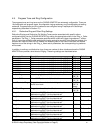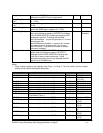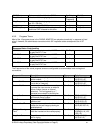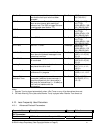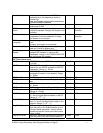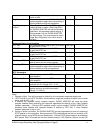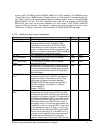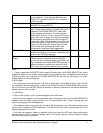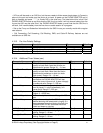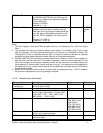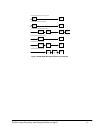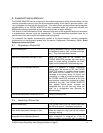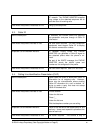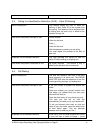
SAS line’s own IP address is used in the c = line
and a=sendrecv. In that case the SAS client will
stream RTP packets to the SAS line. The default
value is [empty].
SIP Debug Option None, 1-line, full, exclude OPTIONS, exclude
REGISTER, exclude NOTIFY, …
Choice none
Network Jitter Level 4 settings are available: very high, high, medium,
low. This parameter affects how jitter buffer size is
adjusted in the PHONE ADAPTER. Jitter buffer
size is adjusted dynamically. The minimum jitter
buffer size is 30 ms or (10 ms + current RTP frame
size), which ever is larger, for all jitter level settings.
But the starting jitter buffer size value is larger for
higher jitter levels. This parameter controls the rate
at which to adjust the jitter buffer size to reach the
minimum. If the jitter level is set to high, then the
rate of buffer size decrement is slower (more
conservative), else faster (more aggressive).
Choice High
SIP 100REL Enable Enable the support or the 100rel SIP extension for
reliable transmission of provisional responses (18x)
and the use of PRACK requests.
Bool No
Blind Attn-Xfer
Enable
If enabled, the PHONE ADAPTER performs an
attended transfer operation by terminating the
current call leg, and blind transferring the other call
leg. If disabled, the PHONE ADAPTER performs an
attended transfer by referring the other call leg to
the current call leg while maintaining both call legs.
Bool No
Notes:
1. If proxy responded to REGISTER with a smaller Expires value, the PHONE ADAPTER will renew
registration based on this smaller value instead of the configured value. If registration failed with an
“Expires too brief” error response, the PHONE ADAPTER will retry with the value given in the Min-
Expires header in the error response.
2. MOH Notes:
• The remote party must indicate that it can receive audio while holding MOH to work. That is the SIP
2xx response from the remote party in reply to the re-INVITE from the PHONE ADAPTER to put the
call on hold must have the SDP indicate a sendrecv or recvonly attribute and the remote destination
address and port must not be 0
3. SAS Notes:
• Either or both of lines 1 and 2 can be configured as an SAS server.
• Each server can maintain up to 5 simultaneous calls. If the second line on the PHONE ADAPTER is
disabled, then the SAS line can maintain up to 10 simultaneous calls. Further incoming calls will
receive a busy signal (SIP 486 Response).
• The streaming audio source must be off-hook for the streaming to occur. Otherwise incoming calls
will get a error response (SIP 503 Response). The SAS line will not ring for incoming calls even if the
attached equipment is on-hook
• If no calls are in session, battery is removed from tip-and-ring of the FXS port. Some audio source
devices have an LED to indicate the battery status. This can be used as a visual indication whether
any audio streaming is in progress.
© 2004 Linksys Proprietary (See Copyright Notice on Page 2)
74



